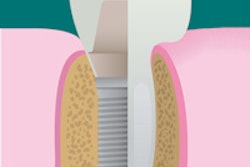Open a consumer magazine or turn on the TV and you're likely to be bombarded with advertisements for Lexapro, Cymbalta, Zoloft, Paxil, Prozac, Wellbutrin ... the list seems almost endless. In fact, the use of psychotropic drugs -- antidepressants, antipsychotics, and anticonvulsants -- has been growing at an alarming rate for the past decade.
A 2004 study by the U.S. Centers for Disease Control and Prevention (CDC) found that antidepressants are the most prescribed drug in the U.S., with adult use nearly tripling between 1988-1994 and 1999-2000. Between 1995 and 2002, the most recent year for which statistics are available, the use of these drugs rose 48%, the CDC reported.
"The situation has changed a lot in the last five years," said Steven Ganzberg, D.M.D., chief of dental anesthesiology and clinical professor at Ohio State University. "Part of it is a big increase in the diagnosis of bipolar disorder. We are seeing a mix of psychiatric drugs that was not common even a decade ago."
This trend has important implications for dentists working with patients taking these drugs, according to an article in the fall 2008 issue of Anesthesia Progress (Vol 55:3, pp. 89-99). For example, patients on antidepressants and antipsychotics are more likely to develop xerostomia (which can lead to a higher incidence of caries) and orthostatic hypotension. Other potential side effects include candidosis, bruxism, surgical bleeding, and adverse interactions with vasoconstrictors.
"Psychiatric illnesses including panic/anxiety disorder, depression, psychoses, and manic disorders are prevalent within our society," writes author Daniel E. Becker, D.D.S., associate director of education in the general dental practice residency at Miami Valley Hospital in Dayton, OH. "An impressive number of drug formulations are prescribed for these disorders, and they introduce concern regarding side effects and possible drug interactions with medications the dentist may deem necessary for dental care."
He considers dentists to be "lucky" because what they prescribe for patients they only prescribe for three to five days at the most, and most of the interactions described in the article only occur if a patient is on a drug for a week or more. "Unfortunately, this spawns sort of a lackadaisical attitude," he said in an interview with DrBicuspid.com.
Clearly, it is important that dentists keep up-to-date on the pharmacologies of these drugs and what medications their patients are taking. But with more than 100 different psychotropics being regularly prescribed these days, how can dentists keep track?
"Dentists know they are out there, but obviously they don't know all their names," Dr. Becker said. "New names pop up every day. This is capitalism at its finest."
Fortunately, you don't have to know everything about each drug; you can look them up and see what category they fit into. "The interactions are not based on the individual drug, but on the category the drug belongs to," Dr. Becker said.
For example, benzodiazepines such as diazepam or temazepam are commonly prescribed sedatives for patients who are particularly anxious about dental procedures. "They are unique compared with other sedatives in their ability to produce anterograde amnesia," Dr. Becker wrote. "This is an advantage for the dentist prescribing them for treatment anxiety, but introduces concern when prescribed chronically for anxiety disorders or insomnia."
In fact, drug tolerance and dependence are the only real concerns for dentists when managing patients taking sedatives chronically, he added -- although macrolide antibiotics such as erythromycin, which compete for the enzymes that inactivate most benzodiazepines, can prolong the half-lives of the benzodiazepines.
Part II of this two-part series looks at the key interactions associated with antidepressants, antipsychotics, and anticonvulsants that dentists should be aware of.



















